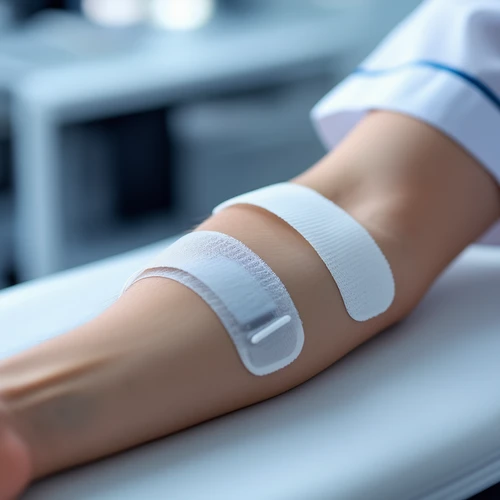Researchers at Seoul National University College of Engineering have developed a wearable electronic device that attaches to the skin like a bandage, allowing for real-time and continuous blood pressure monitoring over long periods.
Unlike traditional cuff-based monitors that use an inflatable air bladder around the arm, this innovative technology measures blood pressure continuously with a compact flexible electronic patch, gaining global attention for its convenience and design.
The collaborative study was carried out in conjunction with Carnegie Mellon University and published in Advanced Functional Materials, led by Professor Seung Hwan Ko of the Wearable Soft Electronics Lab, Department of Mechanical Engineering.
Advanced Functional MaterialsWith only 21% of the estimated 1.3 billion people with hypertension effectively managing their condition globally, effective continuous monitoring technology is a major public health concern.
The widespread cuff-based blood pressure measurement method limits continuous tracking due to its one-time use and cause discomfort for long-term wear. Measurement inaccuracies can also occur due to improper positioning or stress during use.
These limitations hinder the detection of dynamic blood pressure changes linked to individual health status and lifestyle, which is critical for early diagnosis and prevention of cardiovascular diseases. There's an urgent need for technologies that allow comfortable continuous blood pressure measurement by simply attaching a device to the skin.
The research team developed this technology based on observing how electrical signals (electrocardiogram) and mechanical signals (pulse) from the heart reach the wrist at different times, depending on blood pressure levels.
Electrical signals transmit quickly through the body following a heartbeat and are detected almost instantaneously at the wrist. Meanwhile, mechanical signals are delayed as blood is pushed out during contraction. The time difference between these signals correlates with blood pressure: higher blood pressure shortens this interval while lower pressure lengthens it. Using this principle, the team designed a model to measure systolic and diastolic pressures continuously by analyzing both signals.
To detect subtle skin changes due to blood flow, the researchers created an electronic device adhering naturally to the patient’s skin using liquid metal, which remains in a liquid state at room temperature and conducts electricity well. However, high surface tension made it challenging to create precise circuits with this material.
The team solved this by developing a unique process called "laser sintering," where finely dispersed liquid metal particles are heated with a laser to fuse them together only at desired locations. This method avoided the need for additional chemicals and produced an electronic device with excellent electrical conductivity and deformability.
This device successfully measured electrocardiograms and heart rates, maintaining performance even when stretched beyond 700% of its original length or repeatedly flexed over 10,000 times. It also recorded rapid blood pressure changes during exercise more accurately than traditional cuff methods.
The wearable device promises to revolutionize health management by allowing real-time blood pressure monitoring with a simple wrist attachment, eliminating hospital visits for measurements. For patients with chronic conditions like hypertension, it helps monitor and adapt their condition promptly.
It also tracks blood pressure changes during exercise, which can assist personalized fitness plans. Its industrial potential spans integration into wearables like smartwatches, patch devices, or wearable sensors embedded in clothing, contributing to preventive healthcare beyond hospitals.
Professor Ko highlighted the technology's potential impact on improving quality of life by allowing real-time monitoring and analysis of physiological signals non-invasively in various settings, including intensive care, workplace safety, and lifestyle health analytics.
The co-first authors, Jung Jae Park and Sangwoo Hong, aim to advance this smart sensor technology through further research integrating substrate materials, wireless communication functions, and AI-based data analysis technologies.


